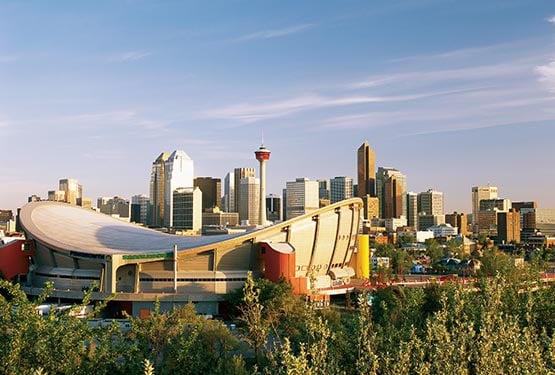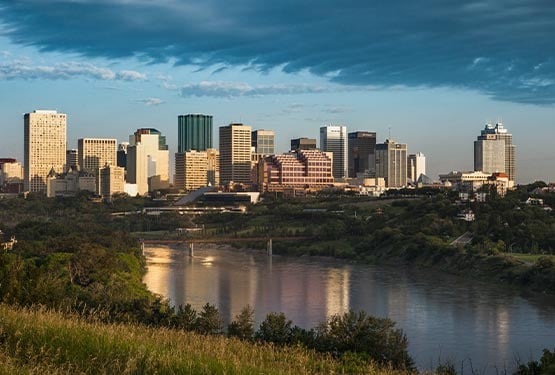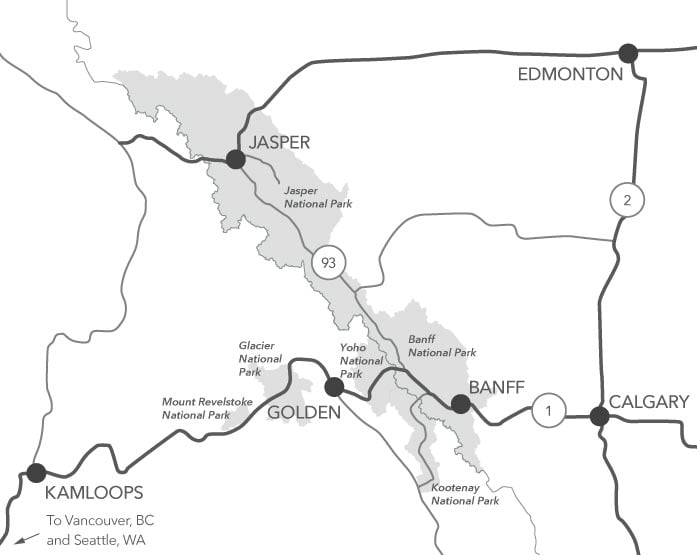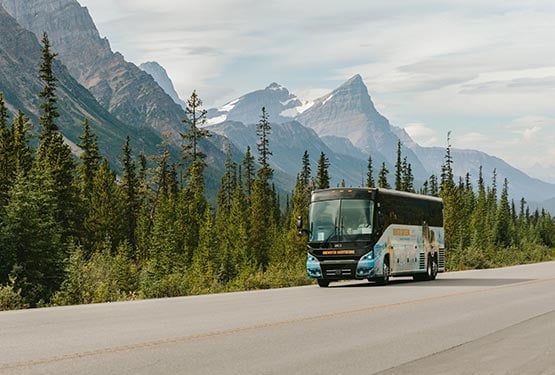Are you planning a trip to Banff National Park? It’s not hard to understand why millions of people visit every year. The natural beauty of the Canadian Rockies attracts visitors year-round, from world-renowned skiing in the winter to breathtaking hiking trails in the summer. Whether you’re coming from near or far, we’ve got everything you need to know about Banff right here.
As the closest metropolitan city to Banff, travellers arriving via plane will likely land in Calgary. With a population of over 1.3 million, you may want to stop in town before heading out to Banff to experience the arts, culture and robust food scene that Calgary has to offer. Otherwise, Banff is just under 150 kilometers away and is about an hour and a half drive, boasting a beautiful mountain views along the way.


Alternatively, you might arrive at the Edmonton Airport, Edmonton is the capital of Alberta and the second biggest city in the province. It’ll take about four hours to drive the more than 400 km from Edmonton to Banff, and your route takes you south through Calgary before heading west. You may have also landed in Edmonton to visit Jasper first — in which case you’re in for a breathtaking drive through the mountains.
From Calgary: It’s pretty straightforward to drive from Calgary to Banff. The fastest route is via Stoney Trail. Then it's a straight line from northwest Calgary to Banff on the Trans-Canada Highway (Highway 1). Exit when you see signs for Banff. (Total time: 1 hour 30 minutes)
From Edmonton: You’ll head south on Alberta Highway 2, travelling through Red Deer and Calgary before briefly venturing across Calgary on AB-201/Stoney Trail. Then follow the Trans-Canada Highway signs to Banff. (Total time: 3 hours 45 minutes)
From Jasper: Stopped in Jasper first? You’ll enjoy this drive — follow Alberta Highway 93 south through the mountains. It’s a beautiful drive, but make sure to check for road closures if you’re travelling in the winter. (Total time: 3 hours 30 minutes)
From Calgary: If you’re not looking to rent a car and drive, take the Brewster Express from the Calgary Airport or downtown. It’s the most comfortable way to get to Banff!
From Edmonton: You won’t find a direct Edmonton to Banff bus, but there are several options for getting to Calgary. This includes Red Arrow, Rider Express, Cold Shot and The Canada Bus. Then hop on the Brewster Express to head to Banff.
From Jasper: Hop on the Mountain Connector through Sundog Tours to travel to Banff from Jasper and relax during this scenic bus ride.


Snow is plentiful in the Rocky Mountains and if you visit in the winter, you’re sure to see a snowfall or two. The weather can get chilly and dry — expect average lows of -15°C but prepare for colder as the temperature can get to -30°C. Pack warm clothes and look forward to favourite winter activities like skiing at Sunshine Ski Resort, skating on frozen lakes, snowshoeing and soaking in the hot springs.
While snow lingers, temperature highs hover around 10°C. Alberta gets a lot of sun, so you might feel a bit of summertime weather. Don’t be surprised when locals emerge in shorts while snow remains on the ground. All your favourite winter activities are available through most of the spring — like skiing and snowshoeing — but with warmer weather. Seasonal summer activities also start opening in May, so look out for sightseeing and touring!
At last, it’s warm and sunny! The weather can still get cool in the summer, especially during the evenings and early mornings. If you’re heading out on a hike, you might start with a light jacket and pants and end up in shorts and a T-shirt. This season, some of our favourite attractions are open including Lake Minnewanka Cruise, Columbia Icefield Adventure, Open Top Touring and more.
It’s the season of watching the leaves change, and if you’re lucky, seeing the first snowfall. You’ll find mornings to be quite chilly and then warm in the afternoon in early fall. By December, temperatures will likely be cool all day. Enjoy the golden larch leaves while you hike Larch Valley, take in the views from Banff Gondola, enjoy the last bit of golf season and relax.
If you’re driving, you’ll need to purchase a park pass to enter Banff National Park. The park passes and fees help maintain and service the park. You can purchase your pass at the entry gates to the park or in advance online.